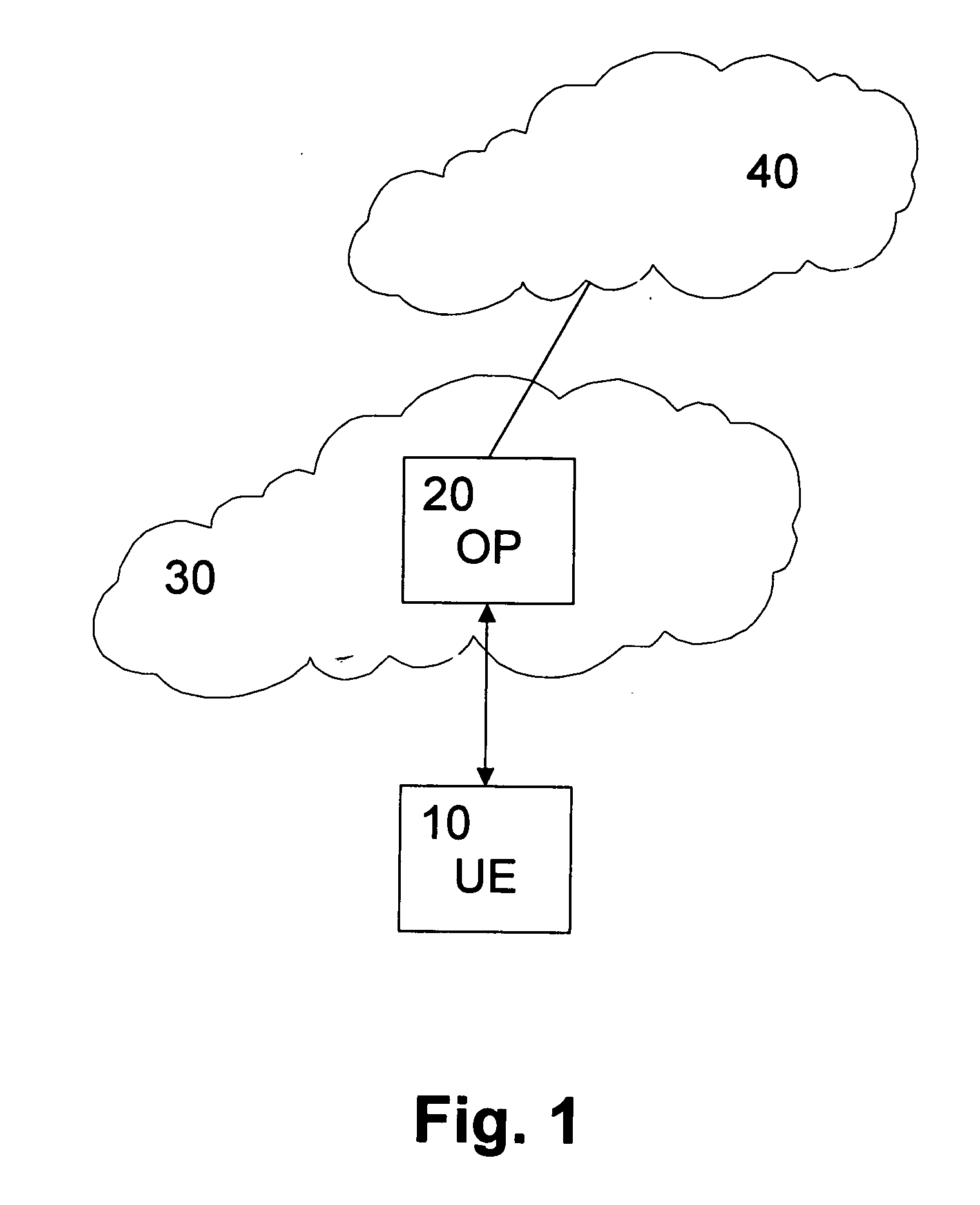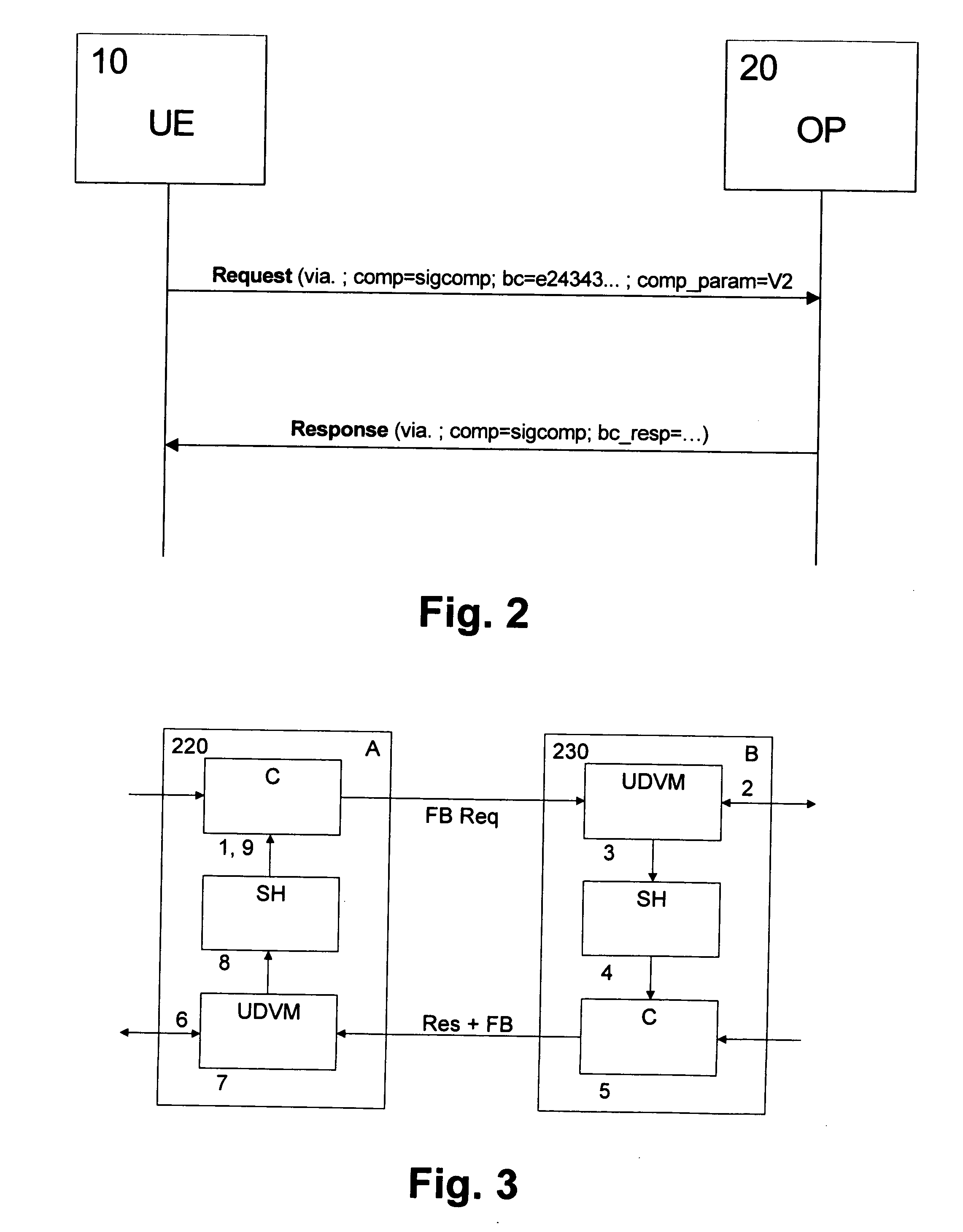Signaling compression/decompression with improved efficiency
a signaling message and compression technology, applied in the field of signaling message compression/decompression with improved efficiency, can solve the problems of large message size, transmission delay, and message size optimization, and achieve the effect of simple signaling compression, simplified compression implementation, and improved signaling compression
- Summary
- Abstract
- Description
- Claims
- Application Information
AI Technical Summary
Benefits of technology
Problems solved by technology
Method used
Image
Examples
Embodiment Construction
[0048] In the following, the preferred embodiments of the present invention will be described in connection with a SigComp signaling compression scheme as defined in RFC 3320.
[0049] In section 3.3. of RFC 3320, five SigComp parameters are described. They affect how a SigComp receiver processes a received SigComp message. In order to have successful SigComp operations, a SigComp transmitter needs to know the values of these parameters of the receiver. The five SigComp parameters are used to define a decompression memory size (decompression_memory_size), a state memory size (state_memory_size), the number of cycles per bit (cycles _per-bit), a compression version (SigComp_version), and a locally available state (a set containing 0 or more state items), respectively.
[0050]FIG. 1 shows a schematic diagram of a network environment according to the preferred embodiment. The SIP user agent (not shown) provided in a user equipment (UE) 10 or other terminal device exchanges SIP messages vi...
PUM
 Login to View More
Login to View More Abstract
Description
Claims
Application Information
 Login to View More
Login to View More - R&D
- Intellectual Property
- Life Sciences
- Materials
- Tech Scout
- Unparalleled Data Quality
- Higher Quality Content
- 60% Fewer Hallucinations
Browse by: Latest US Patents, China's latest patents, Technical Efficacy Thesaurus, Application Domain, Technology Topic, Popular Technical Reports.
© 2025 PatSnap. All rights reserved.Legal|Privacy policy|Modern Slavery Act Transparency Statement|Sitemap|About US| Contact US: help@patsnap.com



